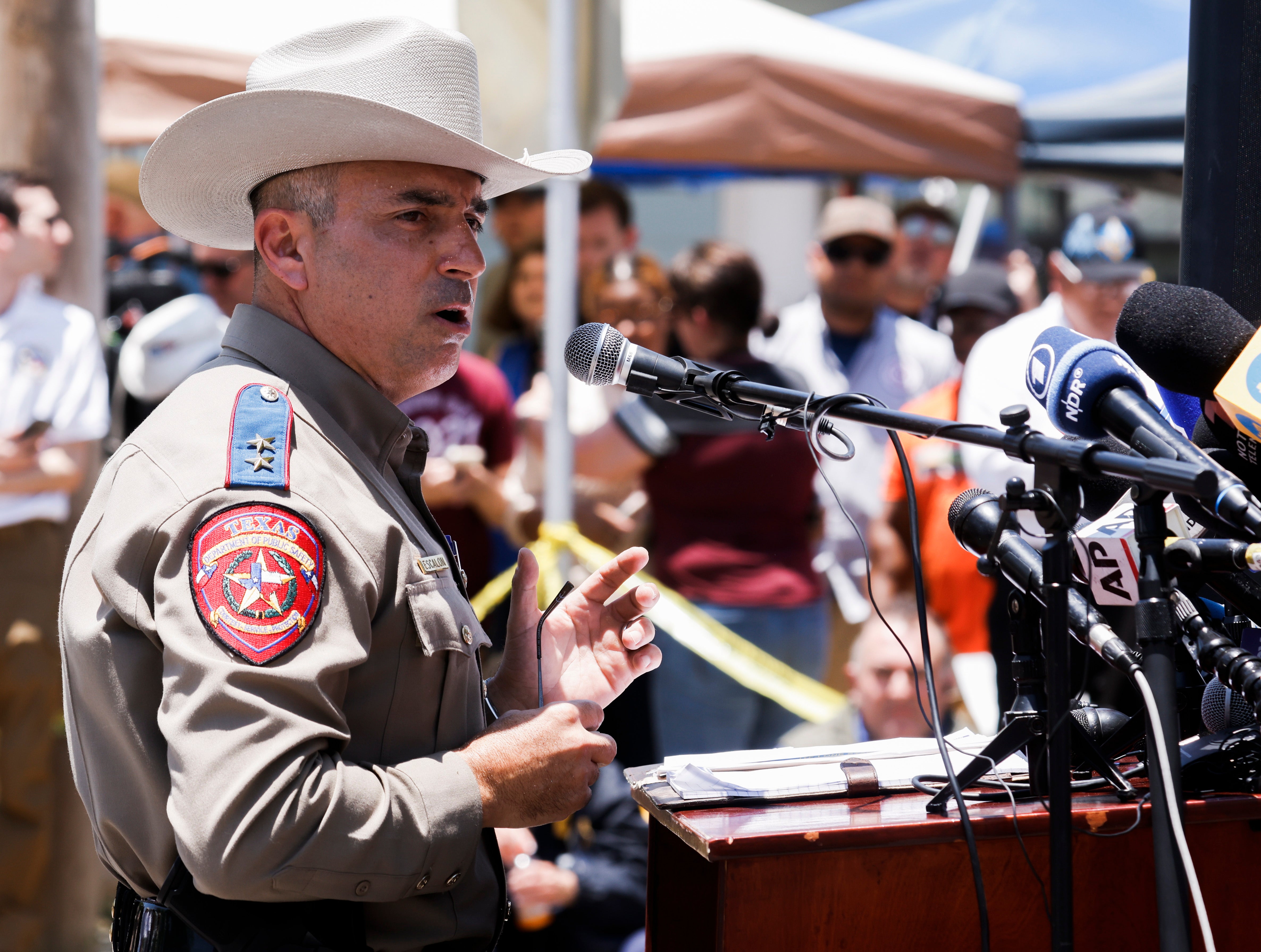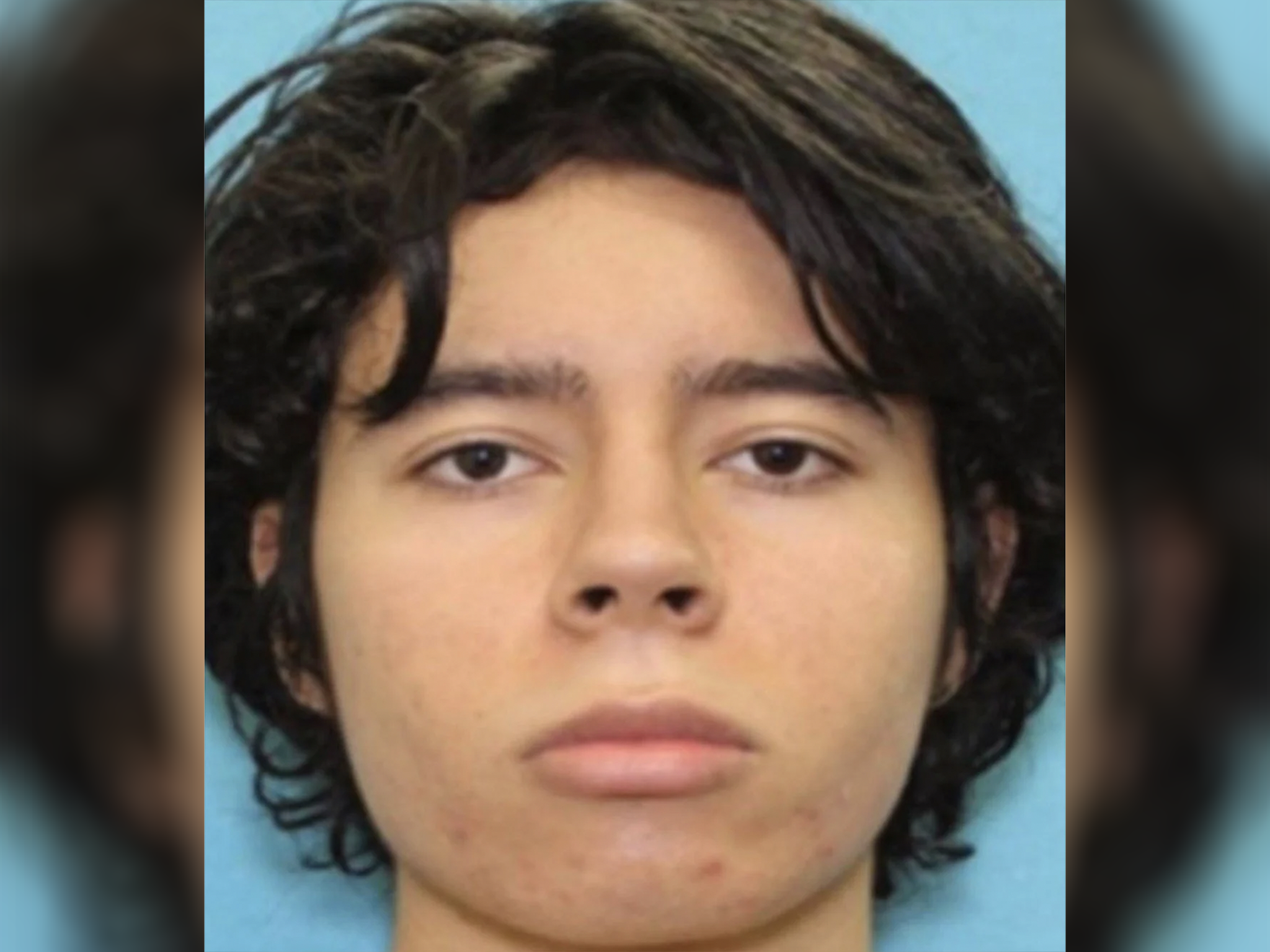Six biggest unanswered questions about the Uvalde shooting and investigation in Texas
Major questions remain about motive and effectiveness of police response
Your support helps us to tell the story
From reproductive rights to climate change to Big Tech, The Independent is on the ground when the story is developing. Whether it's investigating the financials of Elon Musk's pro-Trump PAC or producing our latest documentary, 'The A Word', which shines a light on the American women fighting for reproductive rights, we know how important it is to parse out the facts from the messaging.
At such a critical moment in US history, we need reporters on the ground. Your donation allows us to keep sending journalists to speak to both sides of the story.
The Independent is trusted by Americans across the entire political spectrum. And unlike many other quality news outlets, we choose not to lock Americans out of our reporting and analysis with paywalls. We believe quality journalism should be available to everyone, paid for by those who can afford it.
Your support makes all the difference.The eyes of the nation are on the small town of Uvalde, Texas, where 18-year-old gunman Salvador Ramos shot and killed 19 students and two teachers at Robb Elementary School.
Law enforcement officers shot and killed the teenager after he carried out the massacre, but the investigation continues into what drove Ramos to open fire at the school and how such violence can be prevented in the future.
Local law enforcement has also faced increasing scrutiny over its response to the attack as it unfolded on Tuesday.
Here are six unanswered questions about the horrific shooting:
What was Salvador Ramos’ motive?
Ramos attacked Robb Elementary School on Tuesday, 24 May, and police are still working to determine the motive behind the massacre, the second-deadliest recorded school shooting in US history.
The investigation, being led by the Texas Rangers, with assistance from federal agents at the FBI and Bureau of Alcohol, Tobacco, Firearms, and Explosives, has served search warrants and gathered phone and other records. Officials are also working to contact Ramos’ relatives and trace the guns used in the shooting.
No definitive motive has emerged so far, and there’s been no indication so far that Ramos left behind an extensive manifesto or diary in the way accused white supremacist Buffalo supermarket gunman Payton Gendron did.
So far, only fragments of information have emerged: that Ramos was lonely and the victim of bullying; that he got into frequent arguments with his mother and eventually moved out to live with his grandparents; that he and his father had a tense relationship and spent long periods apart; that he wasn’t set to graduate high school and chafed against Covid restriction; that he frequently played violent video games and flaunted weapons he purchased on social media; that he messaged seeming strangers online about his plan to shoot his grandmother then an elementary school.
It is clear, however, that guns and shootings were on his mind in the months leading up to the attack.
In an Instagram group chat where Ramos was a member, participants mentioned school shootings in February, Texas officials said during a news conference on Friday.
The following month, Ramos mentioned buying a gun on 1 March, and on 3 March. A fellow participant asked the 18-year-old if he had gotten his weapon yet.
“Just bought something rn,” Ramos responded.
According to police, Ramos legally bought two high-powered AR-15-style assault rifles and hundreds of rounds of ammunition shortly after turning 18 on 16 May.
Later in March, one of Ramos’s messages appeared to alarm his chatmates.
“10 more days,” Ramos wrote.
“Are you gonna shoot up the school or something?” they replied.
“No, stop asking dumb questions,” Ramos responded. “You’ll see.”
Why didn’t police stop Salvador Ramos sooner?
Texas officials praised the bravery of police for confronting the shooter, after a team of highly trained Border Patrol agents eventually breached the school building where Ramos was holed up and shot the teenager, sustaining injuries in the process.
But as more details emerge about the law enforcement response to the shooting, many are asking whether they failed to prevent the tragedy, as police took between more than an hour to engage and kill Ramos, even as he massacred scores of students hiding in a single classroom.

Police appeared to have failed on multiple levels during the shooting.
A school police officer assigned to protect Robb Elementary School was not on campus and accidentally drove by the gunman when Tuesday’s mass shooting in Uvalde, Texas, began, according to officials.
“That officer was not on scene, not on campus, but had heard the 911 call with a man with a gun, drove immediately to the area, sped to what he thought was the man with a gun, to the back of the school, to what turned out to be a teacher, but not the suspect,” Steven C McCraw, Director and Colonel of the Texas Department of Public Safety, said at a news conference on Friday.
The officer failed to be on campus during the shooting, despite the district investing heavily in campus security and active shooter training for its staff and officers, including an active shooter practice two months before the Uvalde massacre.
A state police spokesperson said officers intentionally contained Ramos inside the classroom where he killed all 21 victims as a way to prevent him from roaming through the school, a highly controversial decision.
“At that point, if they pursued it any further — not knowing where the suspect was at — they could’ve been shot; they could’ve been killed and, at that point, that gunman would have the opportunity to kill other people inside that school,” Texas Department of Public Safety Lt. Chris Olivarez said in a Thursday interview with CNN.
“They were able to contain that gunman inside that classroom so that he was not able to go to any other portions of the school to commit any other killings,” he added.
On Friday, officials further clarified that picture, saying that a group of nearly 20 officers in a nearby hallway waited to engage with Ramos for nearly an hour because their incident commander thought the active shooter stage of the incident was over, and a standoff was coming next.
All the while, children inside the classroom were frantically calling 911, asking for police to be sent in.
“Of course it was not the right decision. It was the wrong decision, period. There’s no excuse for that,”Mr McCraw said.
A group of Uvalde police officers even reportedly ordered Border Patrol commandos to fall back when the arrived at the school, delaying the response of the team of agents who ultimately killed Ramos.
Ramos remained inside the school long enough that parents were able to mass outside, where video captured them yelling at crowds of heavily armed police officers to take action and engage the shooter.
Javier Cazares, whose daughter Jacklyn was killed in the shooting, told The Associated Press he sped to the school once he heard news of the unfolding attack.
He said parents became so enraged at the apparent inaction of police he considered rallying a group of bystanders and charging the building himself.
“Let’s just rush in because the cops aren’t doing anything like they are supposed to,” he remembers saying. “More could have been done.”
“They were unprepared,” he added.
How was Salvador Ramos able to enter the school and barricade himself inside?
Around 11.30am, Ramos arrived at Robb Elementary in a truck he stole from his grandparents and crashed outside the school. From there, he climbed a fence and was able to enter the school grounds.
A teacher saw Ramos crash his truck and emerge with a gun, then ran back inside the school to call 911, leaving the door ajar.

Ramos then entered through the door and was able to “barricade” himself inside the classroom, where all of the killings were believed to have taken place.
Even once an elite Border Patrol commando team known as Bortac arrived on the scene, they were unable to breach the classroom because of a steel door and cinder block construction, TheWall Street Journal reports. They were eventually able to get inside once they got a key to the room from the principal.
Were there any red flags that should’ve stopped Salvador Ramos from getting a gun?
Texas has some of the loosest gun regulations in the country, and it appears Ramos was legally entitled to buy the assault rifle he used in the massacre, despite numerous indications from friends and family that he was an angry young man who flaunted owning weapons.
He purchased the two AR-15-style rifles legally shortly after turning 18, and in Texas it’s legal to carry such rifles in public without any special license or permit. At most, his purchases may have been reported into an ATF database tracking when multiple assault weapons are purchased near the US Border.
Police have said Ramos had no documented criminal record or mental health issues known to authorities ahead of the shooting.
Will Congress or states finally pass gun control legislation?
After numerous mass shootings in the US, it’s still unclear whether members of Congress or the Texas legislature have the political conviction to pass any effective gun control measures.
With a 50-50 Senate, and an unwillingness on the part of moderate Democrats to do away with the filibuster, all gun legislation at the federal level would have to be bipartisan, and many Republicans balk at even the most nominal attempts to regulate firearms.
Still, Senate Minority Leader Mitch McConnell has said he’s directing his fellow Republican John Cornyn of Texas to work with Democrats and find a bipartisan solution on guns.
“As you know he went home yesterday to see the family members and begin the fact-finding of this awful massacre and I have encouraged him to talk with Sen Murphy and Sen Sinema and others who are interested in trying to get an outcome that is directly related to the problem. I am hopeful that we could come up with a bipartisan solution,” Mr McConnell told CNN.
In Texas, Governor Greg Abbott has said guns are not the problem, and rather mental health issues are. He’s promised to take a look at investing more in care.
“The ability of an 18-year-old to buy a long gun has been in place in the state of Texas for more than 60 years, and think about during the time over the course of that 60 years, we have not had episodes like this,” he said on Wednesday.
“One thing that has substantially changed,” he continued, “is the status of mental health in our communities. What I do know is this: we as a state, we as a society, need to do a better job with mental health. Anybody who shoots somebody else has a mental health challenge, period.”
What comes next?
Police will continue conducting searches, interviews, gun traces, and reviewing security footage as they investigate the Uvalde shooting.
Texas state police are also reportedly investigating the police response to the shooting itself, amid concerns that officers failed to act quickly enough to save children from being slaughtered inside Robb Elementary School, where nearly an hour elapse before police shot gunman Salvador Ramos.
In communities across the country, protests and school walkouts are planned to show solidarity with the victims of the attack and call for more gun reforms.
Hundreds of students at a Michigan high school where a mass shooting took place in November have already walked out of class on Thursday and formed a giant U-shape on the football field as a way to show solidarity.




Join our commenting forum
Join thought-provoking conversations, follow other Independent readers and see their replies
Comments